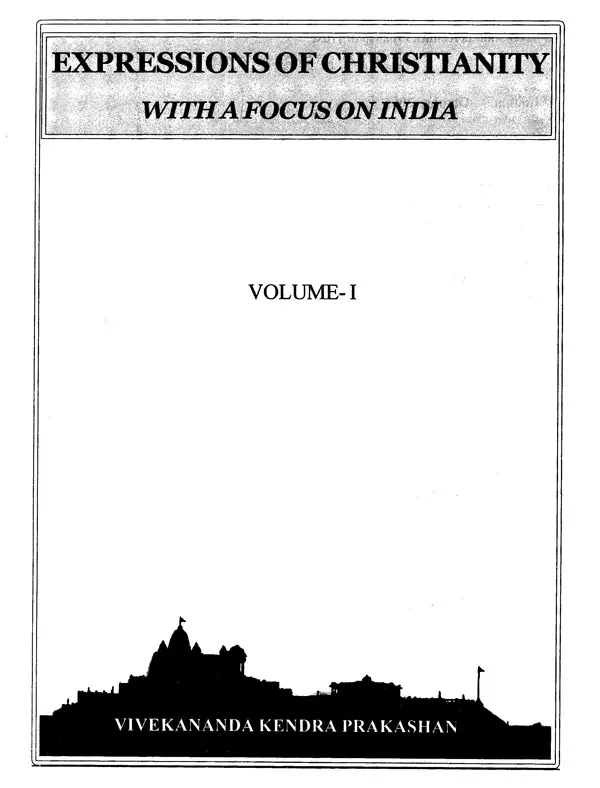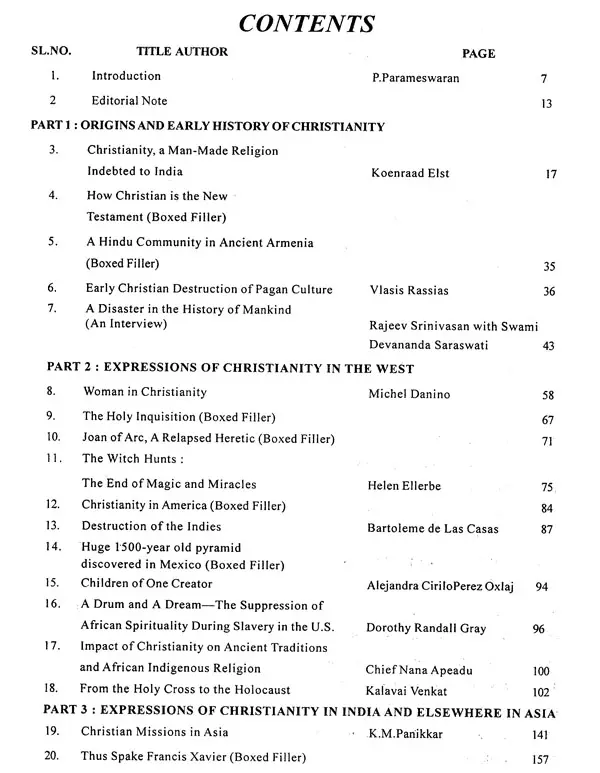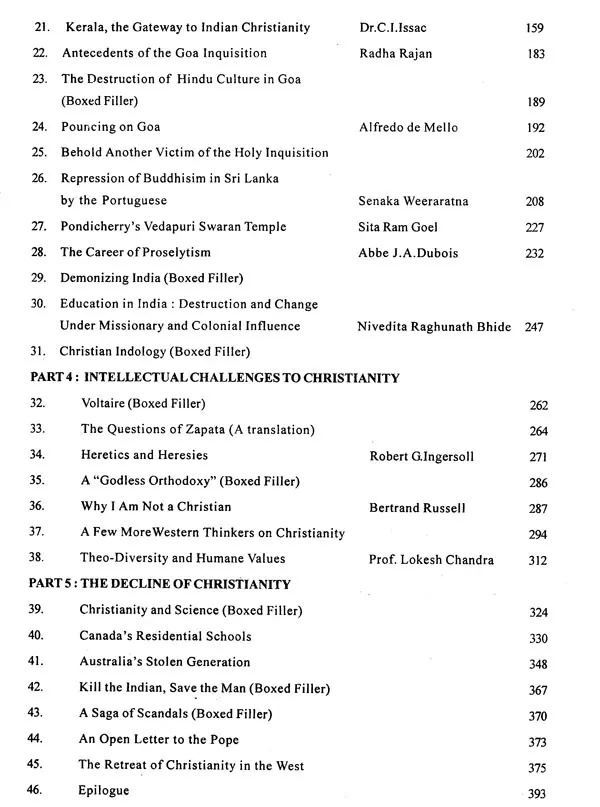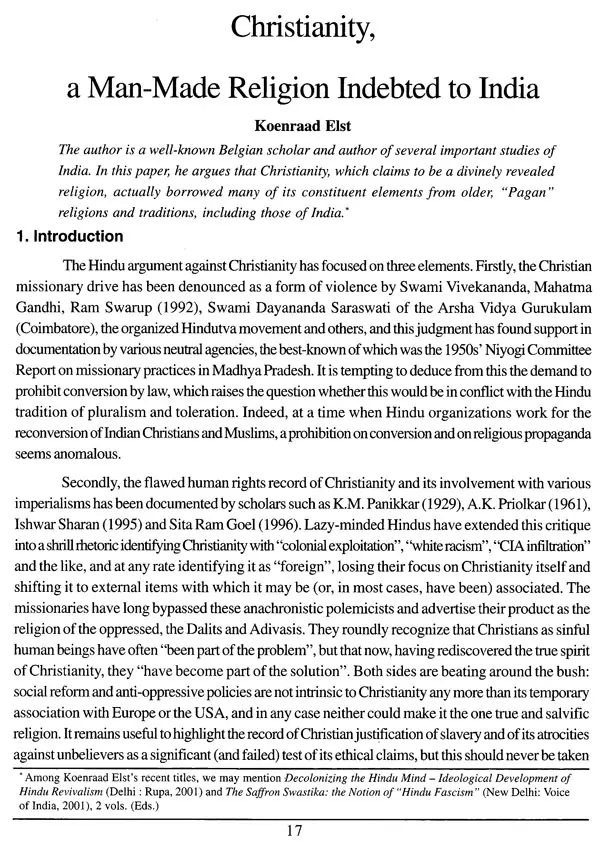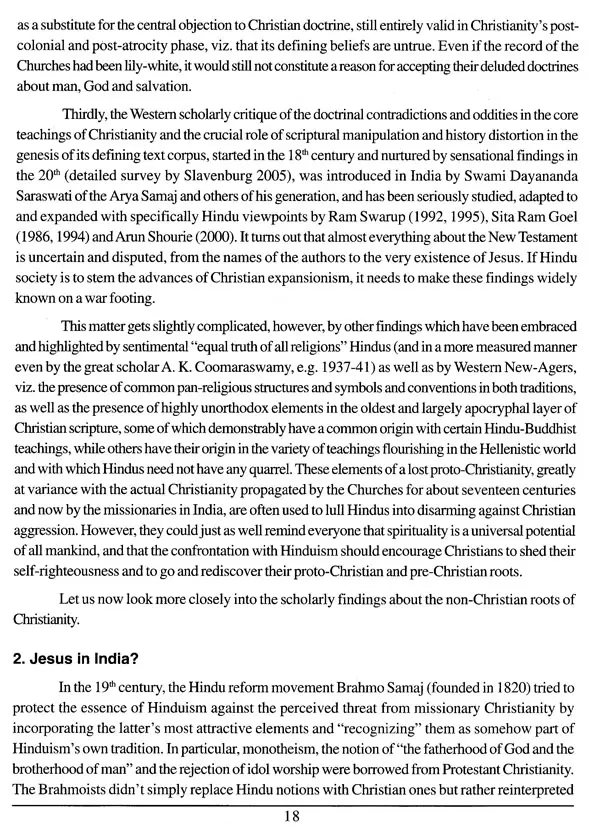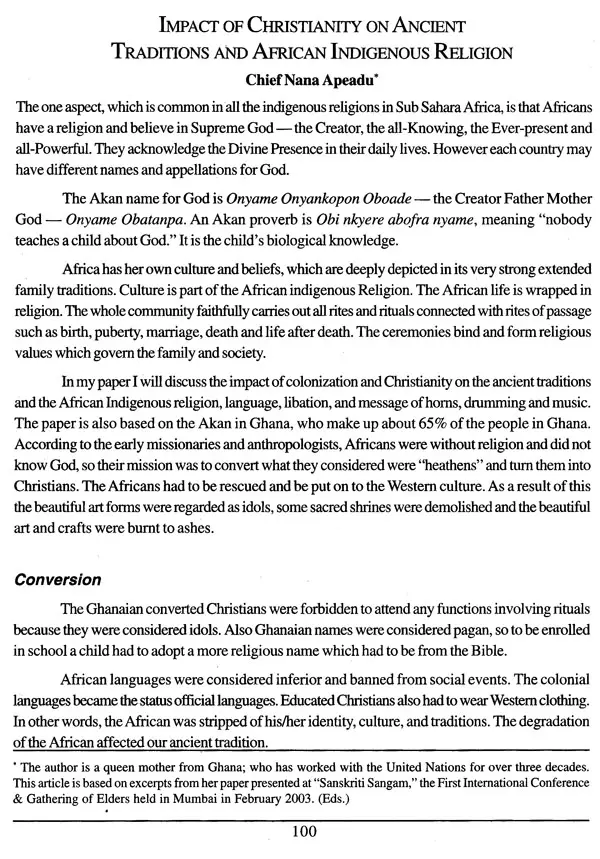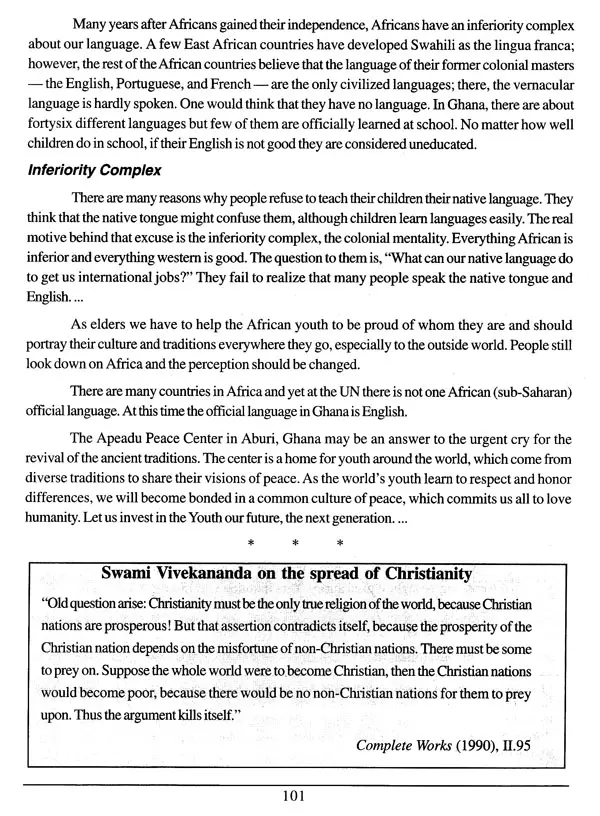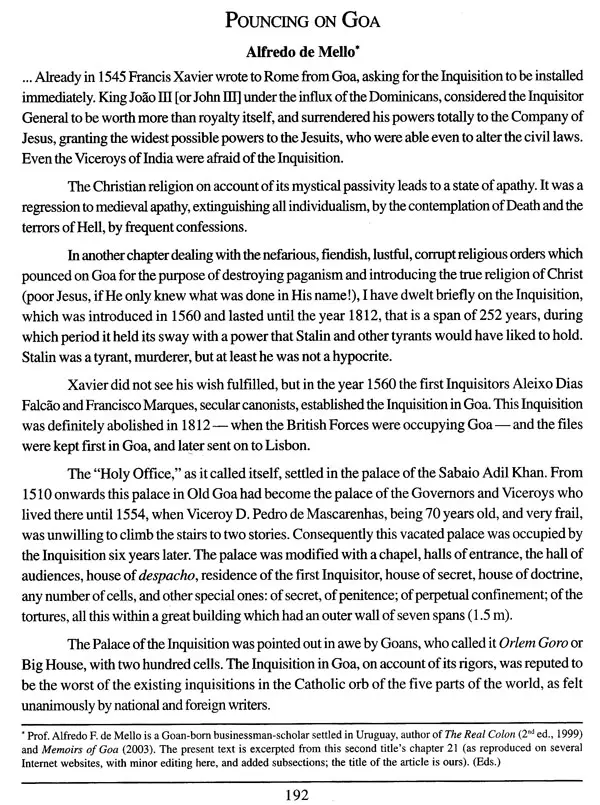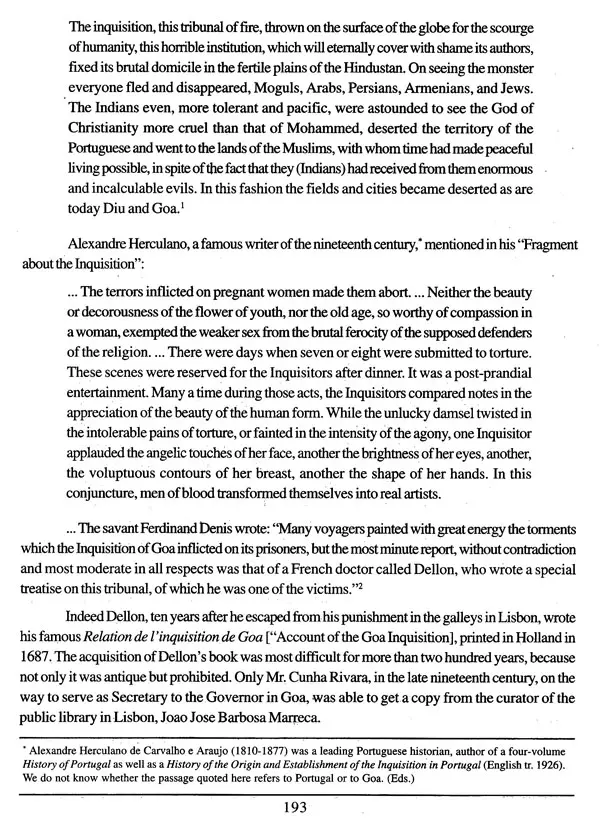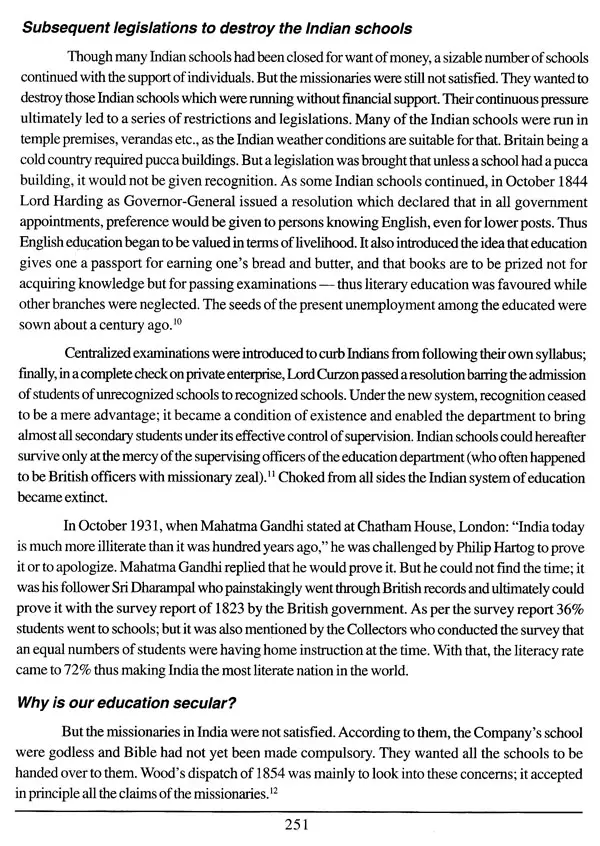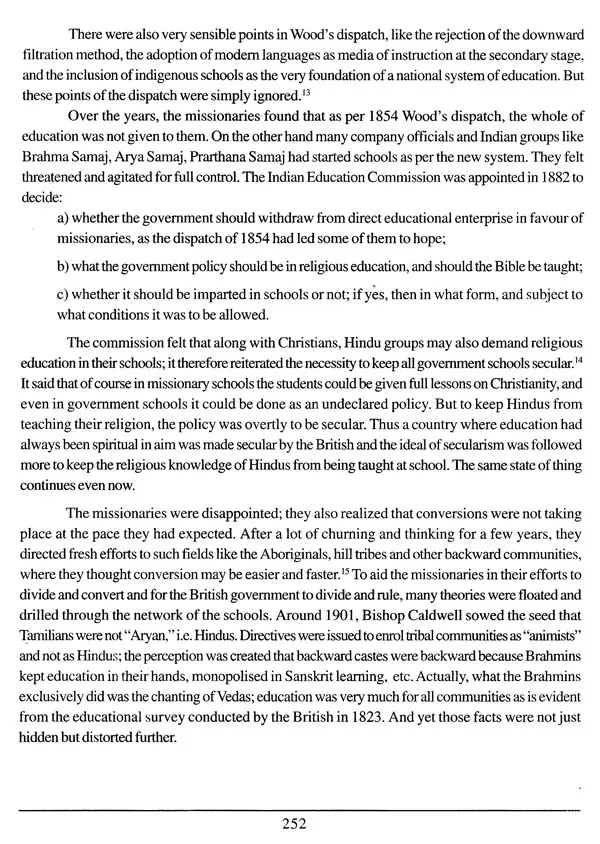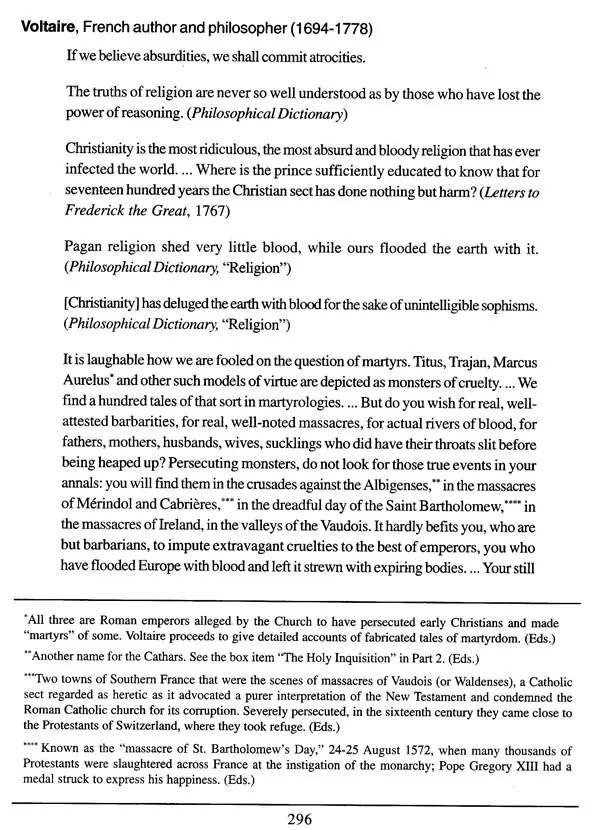
Expressions of Christianity (With A Focus on India)
Book Specification
| Item Code: | UAN958 |
| Publisher: | Vivekananda Kendra Prakashan Trust |
| Language: | English |
| Edition: | 2006 |
| ISBN: | 81892488328 |
| Pages: | 396 |
| Cover: | HARDCOVER |
| Other Details | 10.00 X 7.50 inch |
| Weight | 850 gm |
Book Description
The Kendra felt it necessary to bring out this volume on Christianity not because there is any dearth of literature on this subject in our libraries. On the contrary, such material is abundant at the present juncture. But it has been written by authors who are keen to present Christianity from a particular angle and with particular motive. There are writings by self-confessed missionaries, by acknowledged supporters of Christian imperialism and there are also writings from self-appointed secularists. Even so called objective historians have been hesitant to come out openly and call a spade a spade. Their hesitation is mostly due to the fear of organized, hostile criticism which will not only adversely affect the book market but also make them vulnerable to charges of being communal. Unpleasant truths are very often played sown or distorted, if not totally suppressed. The total outcome of all these is that an Indian student of Christianity finds it difficult to get the truth which is reliable and useful.
One justification for bringing out this volume is that a lot of misunderstanding has been created by interested missionary writers and Christian propagandists about the origin of Christianity in India and also about the methods Christian missionaries have used to propagate their religion in the country. One example may ne cited here. It is widely propagated through writings which claim to be authentic that Christians came to India in the first century AD through St. Thomas, one of the twelve direct disciples of Jesus Christ. It is openly propagated through a wide range of historical and other writings powerfully backed by oral tradition and pastoral teachings that St. Thomas landed in Chowghat near Guruvayur in Kerala in AD 52. They go on to say that St. Thomas converted the Namboodiri Brahmins who were engaged in the worship of God in the Palayoor Shiva temple, by showing miracles. That was, according to them, the beginning of Christianity in Kerala. Based on this theory they trace back the history of Christianity in Kerala. Based on this theory they trace back the history of Christianity in Kerala to nearly 2000 year ago, a statement which has no historical backing whatsoever. Despite the fact that there is no credible historical evidence to uphold this theory, as a result of organized massive propaganda by the clergy over a long period of time, there is a general belief that the advent of St. Thomas in the first century AD and his success in converting Namboodiris who form the highest strata of Hindus society is a fact of history. Even historian have been so overawed by the massive propaganda that they prefer to keep silent rather than court unpopularity. Even authentic historic documents whch at one time widely disputed this claim are not currently in vogue. Textbooks also have been so fabricated that the myth is treated as real history.
But, of late, there has been a funny twist to the whole episode. Some “eminent” clergymen and intellectuals of their persuasion have floated a new theory. According to them, Hinduism come to Kerala centuries after Christianity had its origin in the first century AD. They argue that Namboodiris came and settled down in Kerala during the sixth or the seventh century AD as part of the Aryan colonization, whereas by that time Christianity had a flourishing history in Kerala for about six centuries. So, from the point of antiquity, Christianity is anterior to Hinduism by many centuries.
What is really interesting is that neither theory has any historical evidence to support it. It is all a matter of weighing the comparative advantage and disadvantage of the two theories to the spread well as status of Christianity in Kerala. Whether the claim of high-class Namoodiris to have been the first converts to Christianity is more prestigious or the antiquity Christianity over Hinduism is more prestigious is the crucial issue. History and truth are the casualties. Behind the smokescreen of conflicting theories, mythology has been elevated of history.
Along with this, another parallel mythology of St. Thomas having been murdered by the Brahmins of Tamil Nadu and the origin of St. Thome church on the St. Thomas mount in Chennai where his martyrdom is supposed have taken place is propagated in such a planned and persistent manner that a large number of people blindly believe it.
There has been another cunning and calculated move by persons placed in the high rungs of clerical hierarchy to manipulate evidence and contrive to establish the antiquity of Christianity in Tamil Nadu. The Church has made a really ingenious attempt to prove to the world that the great Tamil Saint Tiruvalluvar was a Christian missionary and Tirukkural a Christian scripture. A Brahmin linguist was hired to manipulate evidences and distort factual materials for this purpose. Huge sums of money passed hands and theories were cooked up; both the scheming Bishop Arulppa and the greedy Brahmin even visited Rome to place the manufactured discovery before the pope for this approval. Later, the whole dishonest endeavour went awry; that is a different matter. But the entire history of this shameless transaction has been widely published. May such unholy attempts have been brought to light, which shows how highly placed clerical personalities have unscrupulously tried fabricate history for spreading Christianity in a systematic manner.
The bogus claim of the Christian antiquity dating from the time of Saint Thomas’s mythical arrival in Kerala stands exposed by an irrefutable historical fact. No Christian literature either in Malayalam, Tamil or Sanskrit is available till the late eighteenth century, which is proof enough to reject totally any Christian impact on Kerala’s literary field. Had Namboodiris been converted in the first century as the claim goes, there would have been no dearth of Christian literature written by them right from that. They were great scholars and prolific writers on religious and cultural subjects at all times. There would have been at least some literature dealing with Christianity, just as there are abundant literary works about Vaishnava, Shiva and Tantric religious subjects.
The total absence of any such Christian literature even during the medieval Bhakti period, when there was a flourishing crop of Malayalam literature like Ramayana, Mahabharata and Sri Mahabhagavata, conclusively proves that whatever Christianity existed in Kerala at that time was only on the margins of social life with hardly any recognition from the mainstream and without any worthy contribution from their side this deafening silence cannot be compensated by flimsy claims put out as a result of after though.
**Contents and Sample Pages**
